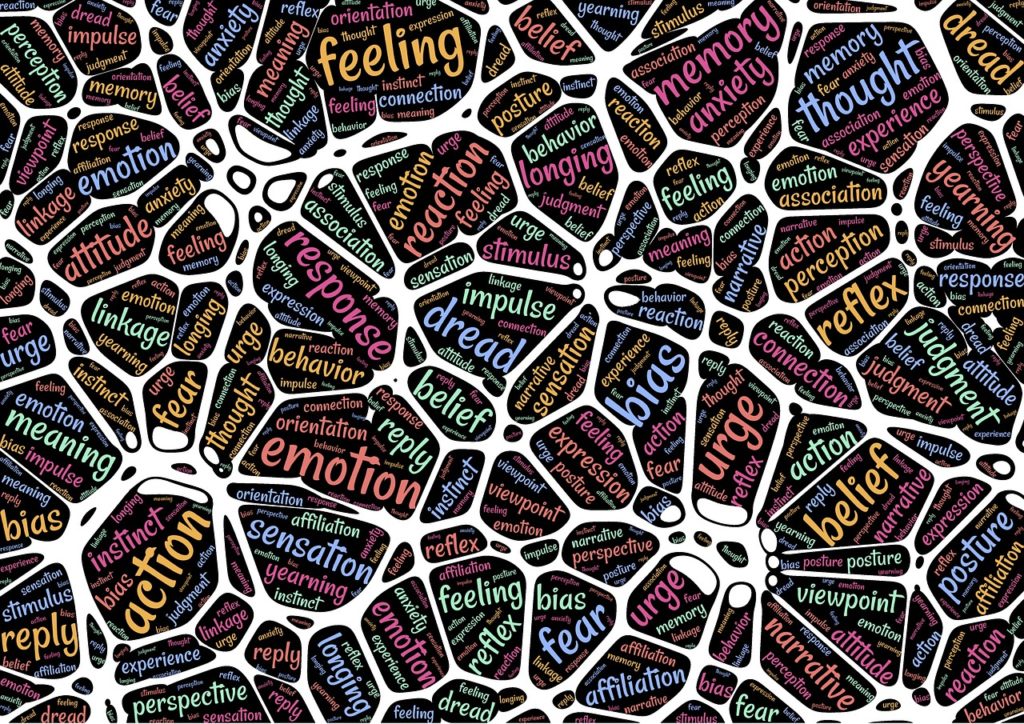
The depiction of mental health inpatient wards on the big screen may lead people to believe that they are action-packed places (e.g. One Flew Over the Cuckoo’s Nest; Girl, Interrupted), but in reality there is often little for patients to do, resulting in intense boredom (Mind, 2017). A study of eight inpatient wards in London found that a quarter of patients reported taking part in no activities at all in a given week, and those who did participate were involved in an average of just 3.5 hours of activities per week (Csipke et al., 2014). The same study found that more activity and one-to-one sessions with staff were associated with patients having better perceptions of the care they received.
How people feel about wards is important, given that those with poorer perceptions are more likely to be readmitted, have worse therapeutic relationships and engagement, and stay in hospital longer (Csipke et al., 2014; van der Post et al., 2014; Williams et al., 2014). Perhaps unsurprisingly, people who are admitted involuntarily (i.e. under section of the Mental Health Act) generally have poorer perceptions of wards (Katsakou et al. 2010; Smith et al. 2014; van der Post et al. 2014). It’s easy to see how this can lead to a cycle: someone is admitted involuntarily, finds the ward unpleasant and boring, doesn’t develop positive therapeutic relationships, takes longer to recover and leave the ward, and is more likely to be readmitted, starting the cycle again.
One reason nurses say that they don’t spend more time on therapeutic activities directly with patients is that they don’t feel they have the knowledge or skills to run evidence-based activities. In an attempt to improve patient perceptions of inpatient wards, Wykes and colleagues (2017) ran a randomised controlled trial that involved training staff in the use of evidence-based group interventions.

Poor patient perceptions of wards are associated with more readmissions and a longer duration of inpatient stay.
Methods
This study used a type of cluster randomised trial called a stepped wedge design, where pairs of wards were sequentially randomised to receive the intervention. Once the first ward of a pair had received the intervention, the second ward then also received it, so that by the end of the study all wards had received it. This type of design results in each control ward subsequently becoming an intervention ward (by which point a new pair of wards has been randomised, and there is a new control ward).
The intervention involved providing training to ward staff in using evidence-based therapeutic activities. There were four core training sessions:
- Social Cognition and Interaction Training (Penn et al. 2007)
- CBT-based communications training for nurses (co-facilitated by a service user educator)
- Computerised Cognitive Remediation Therapy (to involve Occupational Therapists) (Reeder et al. 2016)
- Pharmacists were recruited to run medication education groups (Kavanagh et al. 2003).
There were also additional sessions that could be chosen based on the needs of the ward: Hearing Voices Group (Ruddle et al. 2011), Emotional Coping Skills Group (Linehan, 1997), Problem Solving Skills (Grey, 2015), Relaxation/Sleep Hygiene and Coping with Stigma Group (Knight et al. 2006).
The main outcome was a measure of patient satisfaction with care, called Views on inpatient care (VOICE; Evans et al. 2012), with secondary measures used that rated service satisfaction, symptom severity, patient behaviours, and how much meaningful contact was made with patients.
Results
- Sixteen wards in five different Trusts took part in the study, and an average of 51.6 staff per ward attended training sessions
- The number of staff training sessions provided varied from 24 to 81 per ward
- Across the wards, 70% of service users who were eligible to take part in the study agreed to do so, with 644 people completing pre-intervention, and 414 completing post-intervention measures
- There was good evidence for the intervention improving service user perceptions of wards among those involuntarily admitted, but no effect for those voluntarily admitted
- There was good evidence that the intervention improved satisfaction among those involuntarily admitted, but again, no effect for those voluntarily admitted
- The number of activities provided by wards did not significantly increase, and neither did the average number of people attending activities
- After adjustment for potential confounders there was no evidence that the intervention affected symptoms or nurse-rated behaviour
- The cost of the intervention was approximately £10 per patient per week, with 80% of this due to the opportunity costs of nurses attending the training sessions.

Staff training improved perceptions and satisfaction with wards, but only in patients who had been involuntarily admitted.
Conclusions
A fairly cheap intervention was able to improve the perceptions and satisfaction that involuntarily admitted patients had about wards. This is an important finding, given that patient perceptions predict the number and duration of future admissions. However, the improvements achieved were relatively minor, and it is unclear what led to the changes in perceptions, given that the number of activities provided by wards and the number of service users attending activities did not increase significantly, and neither did symptoms or nurse-rated behaviour.
It would be helpful to know what the effect of the intervention was on staff, as general increases in staff engagement and morale could perhaps explain increases in perceptions and satisfaction, despite the lack of significant increase in activities.

The improvements achieved were relatively minor, and it is unclear what led to the changes in perceptions.
Strengths and limitations
A major strength of the study was the fact that the tested intervention involved training already available in the NHS. This means that expanding this programme would be relatively straightforward. As the authors point out, this would be cost-effective:
Using data gathered in an earlier study, if the better engagement results in only seven patients (95% CI 6–8, <1% of the current sample) agreeing to a voluntary rather than an involuntary admission then the cost of the training programme would be covered (Moore et al. 2015) by the savings from shorter admissions.
Another strength was the study design, with a large sample obtained, involving 70% of the eligible population, using services in a range of areas (e.g. poor, affluent, urban, suburban), and controlling for possible confounders.
The study was limited by the fact that the relationships being tested are very complex, with the potential for many variables to effect service user perceptions. The study did not attempt to assess the effects of any of the individual training sessions, or the effects of individual exposure (i.e. which or how many activities service users participated in). The fairly straightforward statistical methods that were used, mean that more complex relationships were not fully explored.

This was a large, well-conducted study, but the relationships being investigated are very complex and were not fully explored.
Implications for practice
The results of this study suggest that a focus on staff training can impact the perceptions and satisfaction of involuntarily admitted service users. As the authors point out:
An often repeated justification by ward staff for not running activities is that people are too ill to take part. Symptom severity did not influence increased group attendance suggesting that patients can benefit from the provision of increased activities even if they have higher symptoms.
This indicates that even making staff aware of this finding, and encouraging increased provision of activities may help improve perceptions among those involuntarily admitted. Reducing the number and duration of future admissions is vital, and this study offers a practical, low-cost way to help achieve this.
Further research in this area would be helpful in order to pinpoint the mechanisms that lead to improved perceptions and satisfaction, as would future follow-up data collection to investigate the long-term outcomes for service users.

More nuanced analysis in future research may point to mechanisms of change for mental health inpatients.
Conflicts of interest
No conflicts of interest to report.
Links
Primary paper
Wykes T. et al (2017) Improving patient experiences of mental health inpatient care: a randomised controlled trial. Psychological Medicine, Page 1 of 10. © Cambridge University Press 2017 doi: 10.1017/S003329171700188X
Other references
Csipke E, Flach C, Mccrone P, Rose D, Tilley J, Wykes T, Craig T (2014). Inpatient care 50 years after the process of deinstitutionalisation. Social Psychiatry and Psychiatric Epidemiology 49, 665–671.
Evans J, Rose D, Flach C, Csipke E, Glossop H, Mccrone P, Craig T, Wykes T (2012). VOICE: Developing a new measure of service users’ perceptions of inpatient care, using a participatory methodology. Journal of Mental Health 21, 57 –71.
Grey S (2015). Problem solving groups for psychiatric inpatients: a practical guide. In Psychological Groupwork with Acute Psychiatric Inpatients (ed. J. Radcliff, J. Carson, H. Hajek and O. Manor), pp. 191–213. Whiting and Birch: London.
Katsakou C, Bowers L, Amos T, Morriss R, Rose D, Wykes T, Priebe S (2010). Coercion and treatment satisfaction among involuntary patients. Psychiatric Services 61, 286–292.
Kavanagh K, Duncan-Mcconnell D, Greenwood K, Trivedi P, Wykes T (2003). Educating inpatients about their medication: is it worth it? Journal of Mental Health 12, 71–80.
Knight MTD, Wykes T, Hayward P (2006). Group treatment of perceived stigma and self-esteem in schizophrenia: a waiting list trial of efficacy. Behavioural and Cognitive Psychotherapy 34, 305–318.
Linehan M (1997). Skills Training Manual for the Treatment of Borderline Personality Disorder. Guildford Press: New York.
Mind (2017). Ward Watch: Mind’s Campaign to Improve Hospital Conditions for Mental Health Patients. Mind: London.
Moore GF, Audrey S, Barker M, Bond L, Bonell C, Hardeman W, Moore L, O’cathain A, Tinati T, Wight D, Baird J (2015). Process evaluation of complex interventions: Medical Research Council guidance. British Medical Journal 350, h1258.
Penn DL, Roberts DL, Combs D, Sterne A (2007). The development of the social cognitionand interactiontraining program for schizophrenia spectrum disorders. Psychiatric Services 58, 449–451
Reeder C, Pile V, Crawford P, Cella M, Rose D, Wykes T, Watson A, Huddy V, Callard F (2016). The feasibility and acceptability to service users of CIRCuiTS, a computerized cognitive remediation therapy programme for schizophrenia. Behavioural and Cognitive Psychotherapy 44, 288 –305.
Ruddle A, Mason O, Wykes T (2011). A review of hearing voices groups: evidence and mechanisms of change. Clinical Psychology Review 31, 757–766.
Smith D, Roche E, O’loughlin K, Brennan D, Madigan K, Lyne J, Feeney L, O’donoghue B (2014). Satisfaction with services following voluntary and involuntary admission. Journal of Mental Health 23, 38 –45.
Van Der Post LF, Peen J, Dekker JJ (2014). A prediction model for the incidence of civil detention for crisis patients with psychiatric illnesses; the Amsterdam study of acute psychiatry VII. Social Psychiatry and Psychiatric Epidemiology 49, 283–290.
Williams P, Csipke E, Rose D, Koeser L, Mccrone P, Tulloch AD, Salaminios G, Wykes T, Craig T (2014). Efficacy of a triage system to reduce length of hospital stay. British Journal of Psychiatry 204, 480–485.

This is a reoccurring concern in many in-patient wards, what is not mentioned is the role of the Occupational Therapy Team.
I would ask of the commissioning CCG now do they quality assure themselves that meaningful activities & Psychosocial Interventions are offered. The standard NHS contact for providers includes 25 hours of activities and one hour per week 121 psychosocial invention by Primary nurse/named nurse. As a RCoP lay Peer reviewer for CCQI/Quality Network When visiting in-patient wards all keen to speak to patients & Carers about their experience of activities made available am/pm/evenings and weekends and make recommendations. In Bristol all in-patient wards are visited by a user led organization to given assurance to the commissioning CCG. What is interesting is how well resourced is our Enhanced Adult Day Unit (Bristol Acute Community Unit) which must be the envy of the in-patient wards. Some in-patient wards have lead HCA’s that provide Activities Coordinator function on evenings & Weekends. With shorter Length of stay and scaling up of ACU’s it will remain to be seen if engaging in meaningful activities be redefined and by whom.